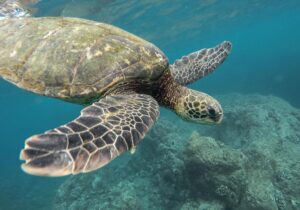Earlier this evening my daughter mentioned she didn’t know the meaning behind the fable The Tortoise and the Hare. While we were discussing it, she asked me about different types of tortoises. This lead to some pretty interesting research. If you’ve ever wondered about different tortoises or have considered breeding tortoises, you’ve come to the right place. Here you have it; 9 types of tortoises and their diets.
African Spurred Tortoise
Contents

To start off our list we have the African Spurred Tortoise. These tortoises live a little bit north of Ethiopia and can grow to be quite large. Their size varies, but on average they get roughly 3 feet long and can weigh upward of 200 lbs. Their diets consist of grass, leaves and fruits (from trees and bushes), dried leaves, and dried plants.
Aldabra Tortoise
Aldabra Tortoises comes from an area northeast of Madagascar and is said to be one of the largest tortoises in the world. These beautiful creatures have been known to have a 150 year lifespan and can get as big as 550 lbs! While these tortoises can go pretty long periods without needing food or water, the diet, when they do eat, consists mainly of woody plants along with grass, occasionally some meat, and sometimes feces.
Egyptian Tortoise
Egyptian Tortoises can be found in Egypt, Israel, and Libya. This tortoise is actually an endangered species. More specifically it is listed as critically endangered. A male grows to be around 4 inches and roughly ¼ of a pound when fully matured. The female, however, can get a little bit large (not by much though) by growing to 5 inches and a little over ¾ of a pound. Their diets include plants, leaves, and the occasional insect.
Greek Tortoise
Greek Tortoises are found in different areas of Africa, Asia, and Europe. These tortoises stay rather small and only get to be around 8 inches when fully matured. In captivity they have been known to live 100+ years, but usually live about 20 years in their natural habitat. Wild plants, flowers, and grasses are what they live off of, and unlike the Aldabra, these tortoises cannot go long periods without water. They have to have available access as often as possible. Hydration is key to their survival and being able to soak in water is another reason these tortoises need frequent access to it.
Hermann’s Tortoise
Hermann’s Tortoises can be found all across the European continent. Two subspecies of this tortoise are not only recognized, but one is listed as endangered while the other is listed as near threatened. They live off of weeds like dandelions, thistles, and clovers. When in captivity they need a variety of foods to keep them healthy. Their captivity diets need to consist of a low amount of protein, foods rich in calcium, and a high amount of fiber. While the biggest they usually grow to is 7.5 inches, they can have a lifespan of 50+ years!
Indian Star Tortoise
Indian Star Tortoises are from India. They can also be found in parts of Pakistan and Sri Lanka. They have life expectancy ranging between 30 and 80 years. As with other species, females tend to be a little bigger than the male, measuring in at 8 inches while the males measure roughly 6 inches. Their diet is usually high in fiber and rich in calcium and includes natural grasses and other vegetation.
Leopard Tortoise
Leopard Tortoises is another African native tortoise. Their size when fully grown measures anywhere between less than a foot to as large as a foot and a half. Wild tortoises have a lifespan of 50 years to upwards of 80 years. They, too, have diets rich in calcium and high in fiber, which includes natural grasses and vegetation.
Russian Tortoise
Russian Tortoises actually hibernate during the colder months. The females grow to be around 6 to 10 inches and the males grow to be in the range of 5 to 7 inches.
Due to them hibernating, they tend to each larger amounts of grass, schubs, and flowers than most tortoises.
Texas Tortoise
Texas Tortoises is, as I’m sure you can guess, a native to Texas. Being a native Texan myself, I have a fondness for this tortoise. They eat succulent plants, prefer pears, and can grow to be around 8 inches in length. These beautiful creatures are also considered a protected species so it isn’t possible to buy them for breeding purposes.
Regardless of where they come from, tortoises will always be amazing creatures to me. If they interest you as well, Reptile Magazine presents some great articles that go more in depth into species and subspecies of tortoises. Now, excuse me while I go tell my husband we are getting a new pet!



GIPHY App Key not set. Please check settings